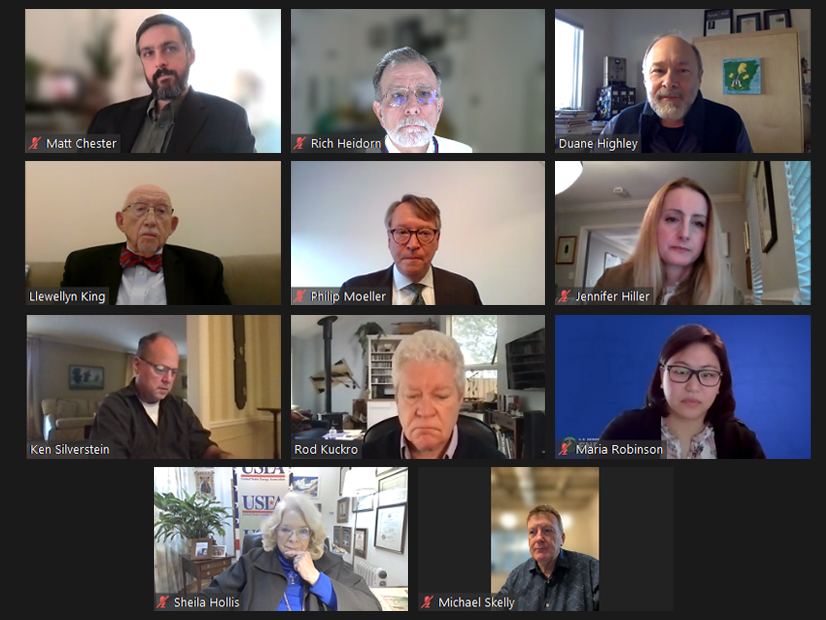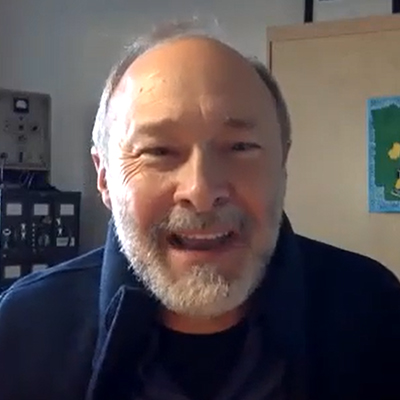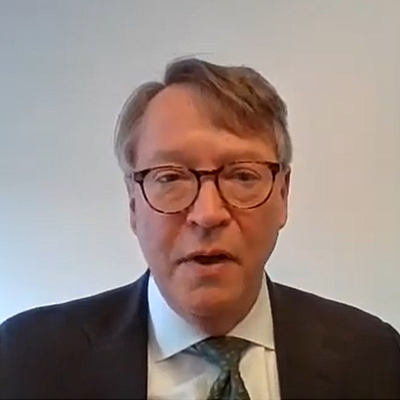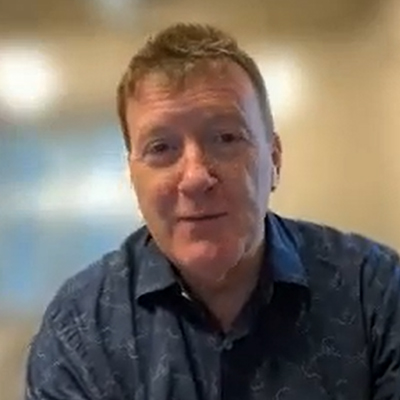
 Duane Highley, Tri-State Generation and Transmission Association | U.S. Energy Association
Duane Highley, Tri-State Generation and Transmission Association | U.S. Energy Association
Solving workforce issues, making transformers easier to replace and improving forest management are among the issues dominating the attention of the Electricity Subsector Coordinating Council, Co-chair Duane Highley said Friday.
The ESSC has been discussing how the industry can deploy federal funding from the Inflation Reduction Act and the Infrastructure Investment and Jobs Act “that would basically triple the rate of expansion of our energy transition,” Highley said during a United States Energy Association virtual press briefing on transmission.
“The No. 1 factor that’s limiting us right now is labor availability. There’s just not enough people,” said Highley, CEO of Colorado-based Tri-State Generation and Transmission Association. “And so despite the will — we might have all the money in the world — if we don’t have the people, we’re not going to get it done. And this is a global problem. It’s not even just limited to us.”
Highley said the ESSC’s wildfire working group is completing efforts with the U.S. Forest Service and Bureau of Land Management to create master special-use permits that will simplify the removal of vegetation under transmission lines.
“We’ve had, in the past, to get separate permits for every single forest district, every single company,” he said. “And what we’re on the verge of completing now … is a master special-use permit that’s going to allow [access] to be negotiated once. And then we can get in and do the work we need to do without so many extra hoops to jump through.”
Getting Away from Bespoke Transformers
 Maria Robinson, DOE Grid Deployment Office | U.S. Energy Association
Maria Robinson, DOE Grid Deployment Office | U.S. Energy Association
Highley and Maria Robinson, director of the U.S. Department of Energy’s Grid Deployment Office, also spoke of efforts to improve the supply of transformers.
Highley said the ESSC, a public-private partnership formed to improve energy resilience after the Sept. 11, 2001, terrorist attacks, has made major strides. “We’re much better today than we were two decades ago,” he said. “One of the things we’re looking at hard right now is the Defense Production Act capabilities that [the Department of Defense] has been given, and it might allow them to engage in helping make transformer supplies better.”
Robinson cited the Solid State Power Substation Technology Roadmap, a research and development effort being led by DOE’s Office of Electricity to reduce the criticality of substation components.
“One of the biggest issues is that transformers … are made to spec. They’re not modular in any way, shape or form,” Robinson said. “And there’s a lot of investment going into research to allow for more modular parts, recognizing that when you’re ordering a very specific design, it could take months or years for that to come in. And from a resilience perspective, we want to make sure that we’re able to rebuild more quickly than that.”
Ukrainian officials said earlier this month that Russia’s strikes on the nation’s infrastructure had destroyed about 30% of its autotransformers.
Asked what lessons the Russian attacks might hold for U.S. resilience efforts, Highley said: “Defense in depth; redundancy. It’s what’s always saved us, no matter what happens, whether it’s weather, cyberattack or physical kinetic attack.”
Florida’s Transmission Stands Tall
 Philip Moeller, Edison Electric Institute | U.S. Energy Association
Philip Moeller, Edison Electric Institute | U.S. Energy Association
Also speaking at the briefing was former FERC Commissioner Philip Moeller, now executive vice president of the Edison Electric Institute, who touted the hardening investments made by Florida’s utilities before Hurricane Ian in September.
“In the last hurricane, we didn’t lose any transmission structures in Florida,” Moeller said. “So that tells you that the infrastructure investments — the hardening, the adaptation, the resilience — actually pay dividends.”
Moeller cited studies estimating that power outages in Florida can result in economic losses of $1 billion per day.
“So to the extent you can invest to correct those outages, that’s a pretty good bargain,” he said. “It also points out [the optionality value of] transmission. … As populations change; when congestion occurs; as public policies change; as fuel choices change, transmission is the infrastructure that gives us optionality.”
Robinson said DOE has $10.5 billion in funding to improve grid resilience and innovation through matching grants, “specifically looking at some of that hardening work that needs to happen, both at the transmission and distribution levels.”
Moeller said additional federal funding also will help expand cybersecurity programs to “more of the smaller energy companies and utilities throughout the country, so that we can have a more comprehensive approach toward the cyber threats that are out there.”
More East-west Transmission
 Michael Skelly, Grid United | U.S. Energy Association
Michael Skelly, Grid United | U.S. Energy Association
Highley and Michael Skelly, founder and CEO of transmission developer Grid United, also talked about the need for more interregional transmission to address reliability problems and the solar duck curve.
“We need a national will to build national transmission east [to] west. So much of what we have now is north to south,” Highley said. “The RTOs even tend to be oriented north to south — if you look at CAISO, you look at SPP, if you look at MISO — and that’s why we have duck curve problems. … A duck curve exists because the sun sets on a time zone all at once. And if you could move that east and west, you wouldn’t have a duck curve at all.”
Skelly was asked whether Texas policymakers might consider making ERCOT FERC-jurisdictional by interconnecting with the Eastern and/or Western grids in response to the blackouts following the February 2021 winter storm.
“I would say the chances of Texas joining the rest of the country, electrically speaking, are between zero and none,” Skelly replied. “But I do think that the prospects for DC connections between ERCOT and elsewhere are fairly good.”
ERCOT currently has transfer capacity of only 1,200 MW with “the outside world, as we in Texas, like to call it,” Skelly said. His company is proposing a project that would connect West Texas and El Paso. He also mentioned Pattern Energy’s Southern Spirit project, a 400-mile line between East Texas and Mississippi.
“I think we’ll see more projects like that. And they’re beneficial, because … ERCOT has tremendous amounts of wind and solar. And these lines would allow ERCOT to share that abundance with the rest of the country, and also provide reliability to ERCOT during stressful grid conditions,” Skelly continued.
“I know ERCOT has had kind of a rough go in many respects. But one of the reasons that Texas has so much renewable energy — we lead the country in wind; we will soon lead the country in solar — is precisely because of its independence. You have one jurisdiction that can make decisions around grid expansion [with] fairly low barriers to entry. … So I don’t think things will change in terms of like FERC jurisdiction, but I do think there’s opportunities to connect us through these DC connections, and those will be beneficial all around.”


